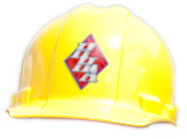Industry experts always cite frequent maintenance and monthly changes of your air filter for basic HVAC 101 tips. However, with a new view of heating and air trends in the modern age, we at Harbin Heating and Air are looking toward a new way of air filtration for the present home.
Filtration systems > single use filters
During the early ages of air filtration technology, the initial goal wasn’t built around optimizing the indoor air quality but rather only protecting the components of the HVAC unit. Designed to keep physical contaminants such as dust and other debris from impeding the operation of producing heat or cool air, holistic movements prioritizing the health and safety of inhabitants would soon influence technicians to think big picture about what great indoor quality truly meant.
Chief among the new approach of burgeoning air filtration was to remove invisible air pollutants such as carbon monoxide, lead, nitrogen oxides, and asbestos among others where they stand, by a process that them from the air and exterminate them by sanitizing the immediate area.
While many carry by with the belief that a standard filter between the grille and airway of their HVAC unit is sufficient enough for their home’s air, the truth of the matter is that they are only trapping so much potential harm in one area. With that in mind, industry experts suggest a “whole home” air filtration system’s approach in maximizing the reach reducing harm.
What kind of “whole home” system works for you?
Every home is different, and depending on your house’s location, history, and other factors, there is no “one size fits all” approach to a “whole home” air filtration solution. While Harbin Heating and Air technicians are happy to consult with you about your goals and installing a full whole home system, here are a few starting points on a couple of systems that are commonly being explored around the country.
Flat – The most common type of air filter and one you are probably familiar with are the standard flat/panel filters that go in between a grille and air duct. The primary goal of these filters is to keep dust and debris out of the system. These filters capture fewer than 20% of particles in the greatest size range of 3-10 microns and have little effect on air quality. These filters are affordable, but they must be changed frequently. Consider these your starting point.
Electrostatic – As its namesake suggests, these filters create static electricity which draws in dusts and other particles. A step up from the basic filters, these are commonly assigned MERV (minimum efficiency reporting value) ratings of 5-12, all within the medium-efficiency scale range.
Electronic – Using a high-voltage electric charge, these types of filters greatly range in terms of efficiency rating, functionality, and safety. Only compatible when installed directly into the handling unit or furnace, this is one of the broader stroke approaches to improving your entire home’s filtration levels. Let experts at Harbin assist you if this sounds like a formidable option for you.
Media and extended media – Heralded by Indoor air quality experts as the most versatile option in reducing air pollutants, these large, pleated features are designed for totality in improving your homes air quality. Taking its foundation from the needs of sanitizing air in schools and hospitals, media and extended media filters are a maximalist option designed for the utmost degree of clean air for your home.
Instead of sticking with the basics and utilizing separate, third party-based purifiers and other devices to pick up slack in the neglected areas that standardized air filters use, turn to the future and considering investing in your health with a single, whole-home filtration unit that reduces harmful contaminants and need for multiple devices in your home. Harbin is here to guide you and will be providing more blogs regarding clean indoor air in the coming weeks.
Stay tuned to this blog and call us with any questions you might have!


